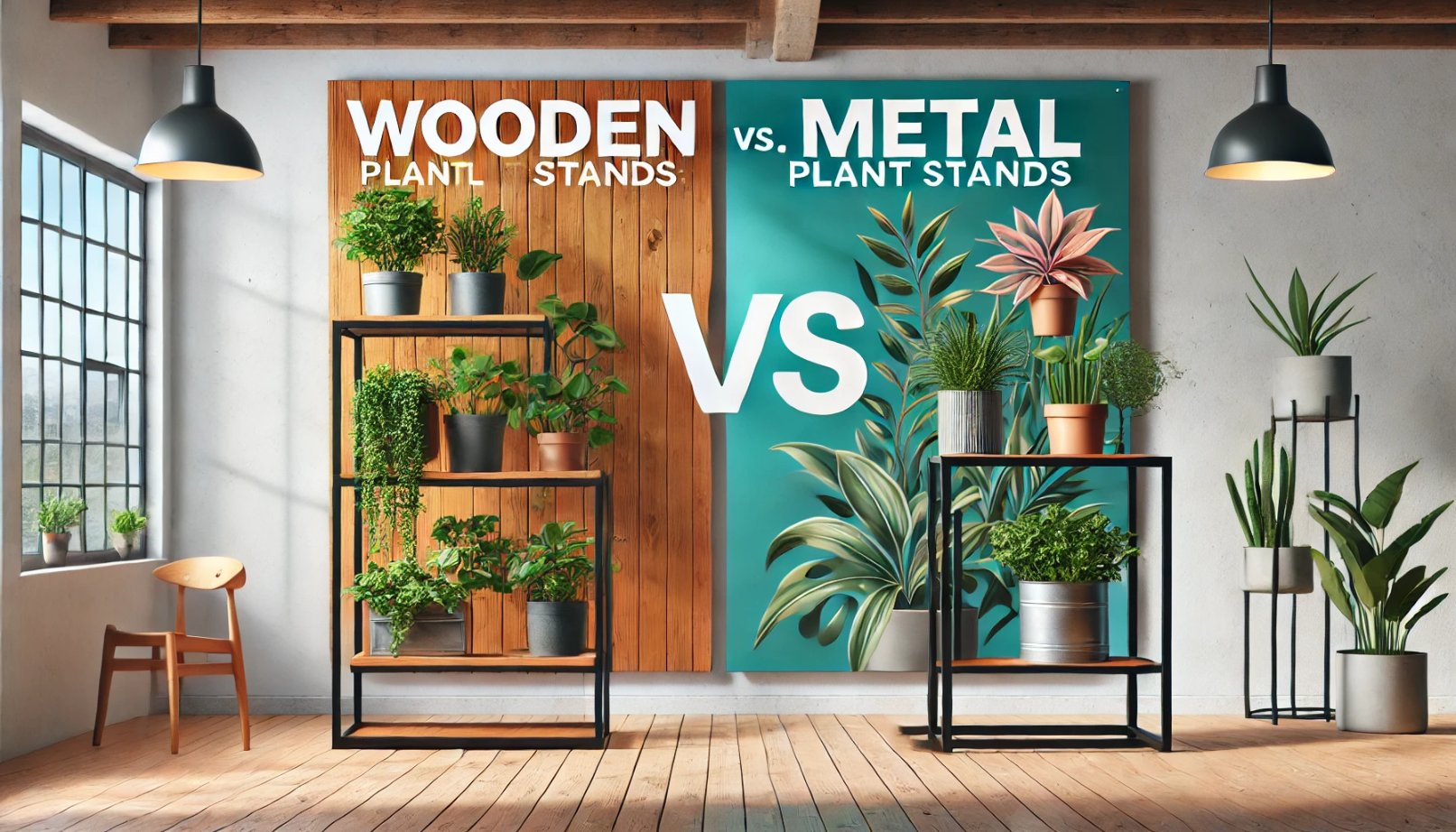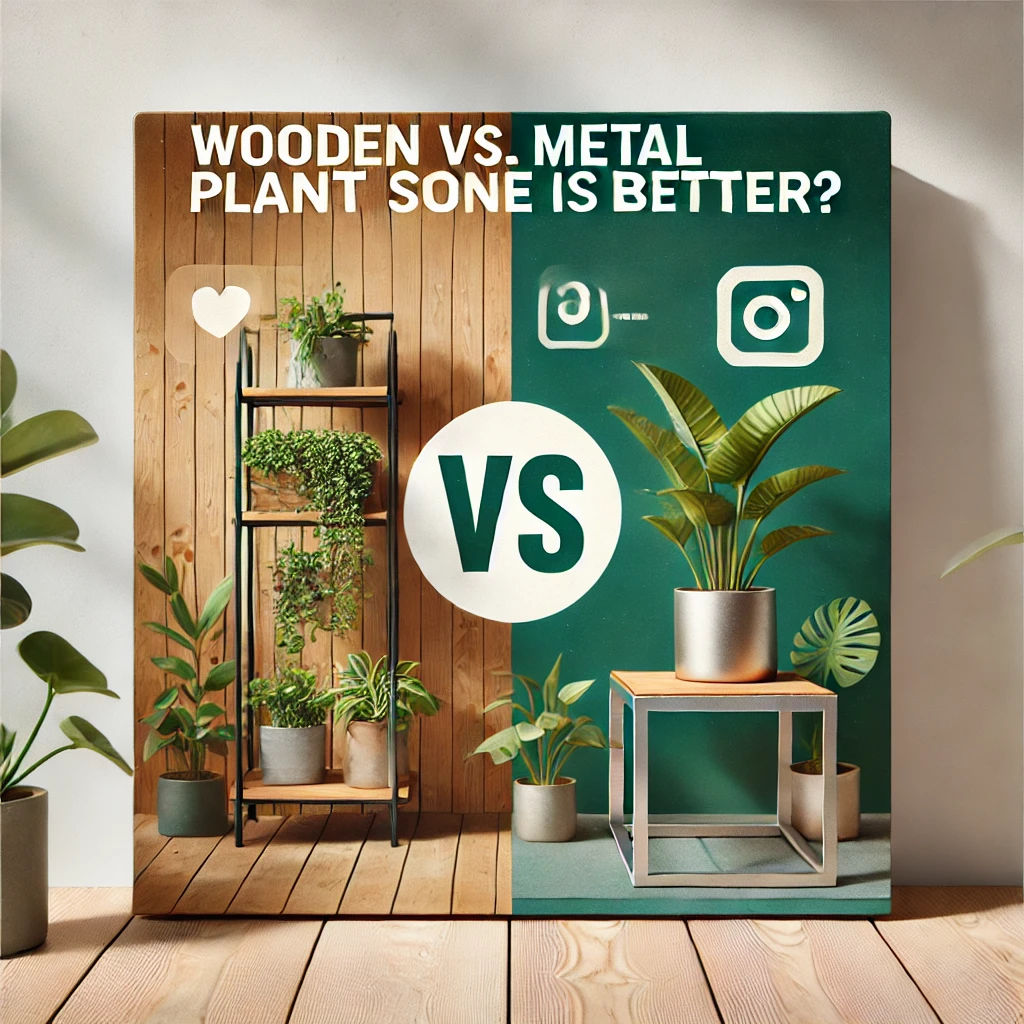
1. Wooden Plant Stands: Pros, Cons, and Best Uses
Wooden plant stands are a timeless favorite among gardening enthusiasts due to their natural and elegant appearance. They blend seamlessly into indoor settings and bring warmth to modern and traditional décor alike.
Pros of Wooden Plant Stands
- Aesthetic Appeal: Adds a natural, warm, and organic look to any space.
- Versatility: Available in various styles, from rustic to modern designs.
- Eco-Friendly: Often made from sustainable materials like bamboo, reclaimed wood, or FSC-certified timber.
- Good for Indoor Use: Blends well with wooden furniture and home décor.
- Sturdy and Stable: Especially if made from solid wood like teak, mahogany, or oak.
- Customizable: Can be painted, stained, or carved to match specific interior themes.
Cons of Wooden Plant Stands
- Prone to Moisture Damage: Wood absorbs water, which can lead to warping, rotting, or mold growth if not sealed properly.
- Higher Maintenance: Requires sealing, polishing, or varnishing to prolong its lifespan.
- Less Weather-Resistant: Without proper treatment, wooden plant stands can deteriorate when exposed to outdoor elements.
- Can Be Heavy: Depending on the type of wood, some wooden stands can be difficult to move.
Best Uses for Wooden Plant Stands
-
Indoor Spaces: Ideal for living rooms, bedrooms, and office spaces.
-
Balconies: Suitable if placed in a shaded or covered area.
-
Boho & Rustic Interiors: Complements earthy, organic aesthetics.
2. Metal Plant Stands: Pros, Cons, and Best Uses
Metal plant stands offer a sleek and modern look, making them a popular choice for contemporary interiors and outdoor settings. They are known for their strength, durability, and ability to withstand environmental factors.
Pros of Metal Plant Stands
- Durability: Highly resistant to wear and tear, lasting for years.
- Weather-Resistant: Can withstand rain, humidity, and sunlight better than wood.
- Modern and Sleek Design: Complements contemporary and industrial-style décor.
- Low Maintenance: Easy to clean and requires minimal upkeep.
- Lightweight Yet Strong: Can hold heavier pots without bending or breaking.
- Space-Saving Designs: Many metal stands come in multi-tiered options, ideal for small spaces.
Cons of Metal Plant Stands
- Can Rust Over Time: Especially if not powder-coated or treated for corrosion resistance.
- Less Natural Look: Might not blend well with cozy, earthy interiors.
- Heats Up in Sunlight: Metal can become extremely hot if placed outdoors in direct sunlight, potentially affecting plant health.
- Can Be Prone to Scratches: Some finishes may scratch easily over time.
Best Uses for Metal Plant Stands
- Outdoor Spaces: Great for patios, gardens, and balconies.
- Modern & Minimalist Homes: Works well with industrial, urban, and contemporary interiors.
- Heavy Planters: Suitable for large and heavy plant pots.
3. In-Depth Comparison: Wooden vs. Metal Plant Stands
| Feature | Wooden Plant Stands | Metal Plant Stands |
|---|---|---|
| Durability | Moderate | High |
| Aesthetic Appeal | Warm & Natural | Sleek & Modern |
| Weather Resistance | Low (unless treated) | High |
| Maintenance | Requires sealing/polish | Low maintenance |
| Weight Capacity | Moderate | High |
| Outdoor Use | Limited | Excellent |
| Customization | High (paint/stain) | Limited |
| Price Range | Varies, often higher | More affordable options available |
4. Maintenance Tips for Longevity
Maintaining Wooden Plant Stands:
- Use a protective sealant to prevent moisture damage.
- Keep away from direct exposure to sunlight and rain.
- Wipe with a dry or slightly damp cloth to remove dust.
- Apply wood polish every 6 months for durability.
Maintaining Metal Plant Stands:
- Use a rust-proof coating if using outdoors.
- Wipe with a damp cloth to remove dust and prevent oxidation.
- If rust appears, use fine sandpaper and repaint with anti-rust paint.
- Avoid placing in extremely humid environments without proper ventilation
5. FAQs About Wooden vs. Metal Plant Stands
Q1: Which plant stand is better for small apartments?
A: Metal plant stands are lightweight and space-saving, making them great for compact spaces. Multi-tiered metal stands are ideal for maximizing vertical space.
Q2: How do I maintain a wooden plant stand?
A: Wipe it regularly, avoid water spills, and apply a protective coating to prevent moisture damage.
Q3: Can I use metal plant stands indoors?
A: Yes! They work well indoors, especially in modern or minimalist homes.
Q4: Which stand is more eco-friendly?
A: Wooden plant stands made from sustainable or reclaimed wood are the greener option.
Q5: What’s the best plant stand for a humid climate?
A: Metal plant stands are better suited for humid environments as they resist mold and rot.
Conclusion: Which Plant Stand Should You Choose?
The choice between wooden vs. metal plant stands depends on your aesthetic preference, budget, and where you plan to use them. If you want a natural, warm feel for your indoor space, wooden plant stands are a great pick. However, if durability and outdoor use are priorities, metal plant stands are the better option.
Need the perfect plant stand for your home? Explore our collection of wooden and metal plant stands at Urban Plant





